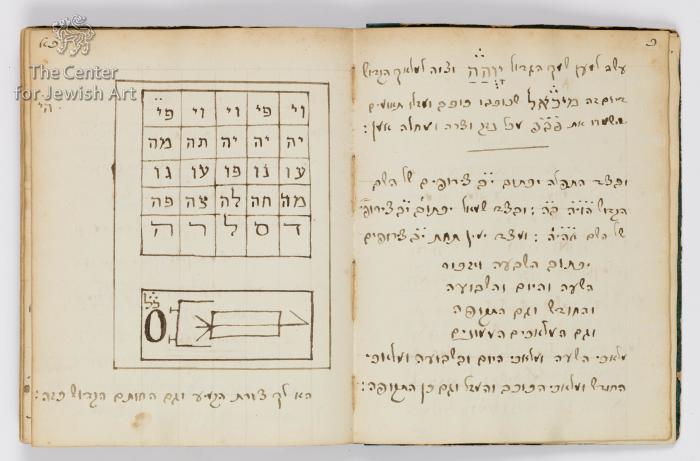Obj. ID: 53437 Sefer Chokhmat Kabbalah Ma'asiyot, The Netherlands, circa 1800

sub-set tree:
The following description was prepared by William Gross:
This manuscript was originally the second part of a set of three volumes. This is one of two of the volumes that still exist in the Gross Family Collection. The subject is practical kabbalah, an extension of the Jewish mystical tradition. Practical kabbalah is the designation for the writing of amulets and the presentation of other magical formulas such as charms. Such manuscripts of Ashkenazi origin, with elaborate diagrams and illustrations of amulets, are very unusual. There is extensive use of angel writing, a highly stylized and imaginary form of Hebrew script.
The two surviving books, Volumes 2 & 3, are unsigned and without indicated place of origin. They were once in a library in Amsterdam and bound in Paris, but the style of writing indicates a more easterly origin. There are several representations of textually rich and elaborate amulets, many stretching across two pages. These are visually striking. The script on the amulets themselves is quite large and therefore extremely clear.
Pages: 124





















